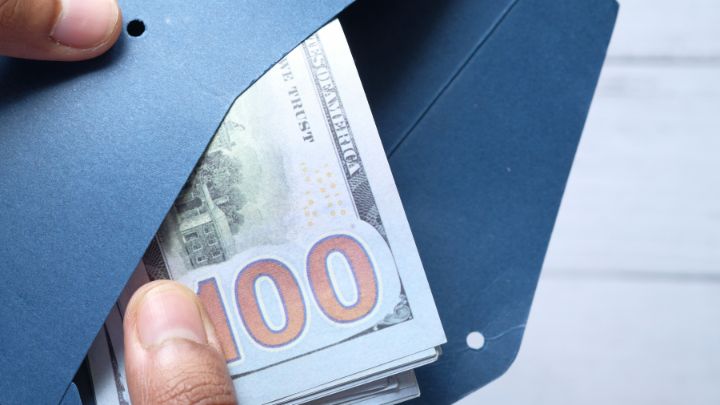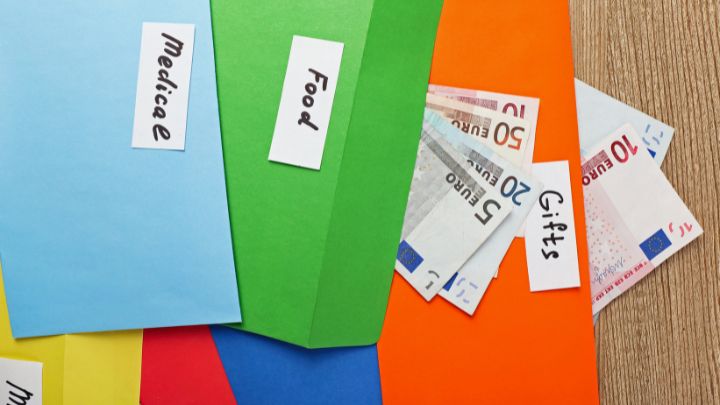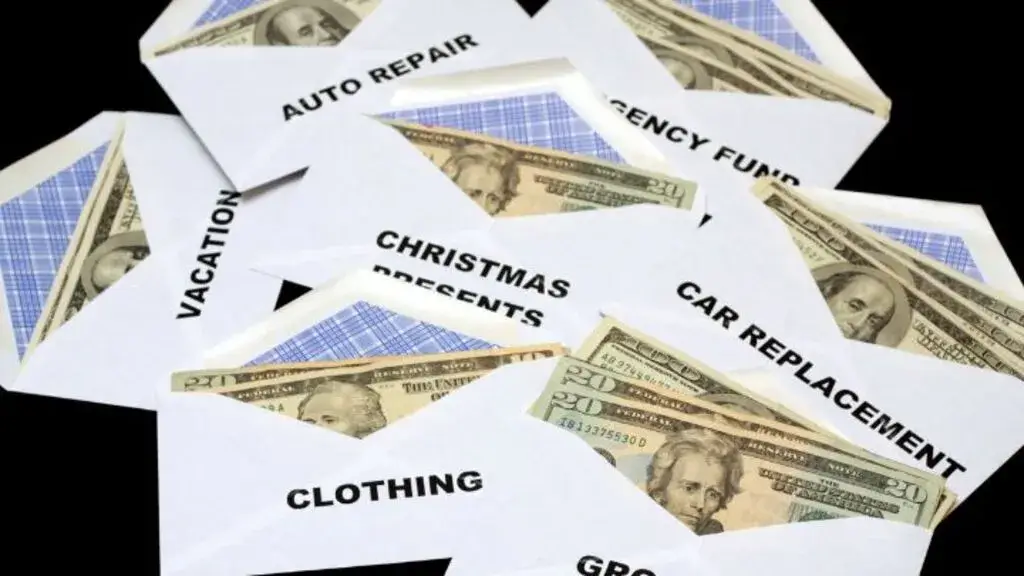Have you ever held a money saving envelope in your hands? The texture of the paper, perhaps scribbled with labels like ‘groceries’ or ‘gas’? It’s a humble yet powerful tool.
Akin to holding one’s financial destiny, these envelopes represent control and clarity over personal finances. They’re simple, but don’t let that fool you. Each envelope holds the key to unlocking a greater understanding of our spending habits.
In this fast-paced world where swiping cards is second nature, using money-saving envelopes might seem outdated…even antiquated. But what if it was not just about old versus new?
This journey into the realm of money-saving will reveal surprising insights and practical strategies – from implementing this system effectively to exploring digital alternatives for tech-savvy savers.
Brace yourself; an unexpected twist is coming your way!
Understanding the Cash Envelope System
The cash envelope system is a classic budgeting technique focusing on spending control and accountability. Its history stretches back decades, evolving into an efficient way to track your monthly expenses.

The Origin of the Cash Envelope System
Invented as a tangible method for people to manage their money better, this old-school strategy has been around for ages. It’s simple yet effective; you get several envelopes (a.k.a; your money saving envelopes) and allocate each one to different budget categories like groceries or entertainment.
You then fill these envelopes with cash based on your planned spending for the month. This gives you clear visibility over how much money you have left in each category – no surprises.
How Does the Cash Envelope System Work?
To use this approach effectively, first define all necessary spending areas – think about common ones like food, transport, or personal care, and also consider occasional spending such as birthdays or holidays. Once that’s done – it’s time to stuff those cash envelopes.
This involves determining how much goes into which envelope according to your budget plan. You might need some trial and error at first, but stick with it. Remember: when an envelope runs out of funds, that’s it until the next payday—no dipping into other ‘envelopes’. But if there are leftovers? Well, hello, savings.
For more help understanding and implementing this tried-and-true system in today’s digital age, check out EveryDollar; they provide great resources around using the cash-envelope method digitally.
Remember – being able to save money and actively control where every dollar goes can be liberating.
Advantages and Disadvantages of Using Money Saving Envelopes
This budgeting technique is straightforward, easy to see, and provides quick feedback about how you’re doing with your finances.
Let’s first look at the upsides. The major advantage of using this method is it enforces discipline and holds you accountable for every dollar spent. You know exactly where each dollar goes by allocating specific amounts to different envelopes, such as groceries or entertainment. This way, tracking expenses becomes easier than ever before.
You also have an effective barrier against overspending because once the money in an envelope runs out, that’s it until next month. So, this method ensures no impulsive purchases are eating into your savings.
But just like anything else in life, saving cash with envelopes has its downsides, too. For starters, withdrawing enough physical cash from your bank account can be inconvenient sometimes – think about ATM fees or time taken away from other tasks.
Juggling multiple envelopes may feel overwhelming, especially if they start getting bulky with coins or bills. EveryDollar, however, offers some help here by allowing digital tracking, which mimics the process without physical dollars involved.
The last disadvantage worth mentioning is that using only what we have might limit us when we need more funds unexpectedly but don’t have them handy right then – perhaps one of those “life happens” moments?
Note: Remember these are general pros and cons – not everyone will experience all of them.
Practical Application of Money Saving Envelopes
If you’re left wondering why your credit card bill keeps going up or where all the money went after a shopping trip, it’s time to consider using money saving envelopes.
The cash envelope system is a practical way to manage both fixed and variable expenses. For instance, if you get paid biweekly, start by setting aside funds for essential categories like groceries or gas immediately after payday. You can use a dedicated cash envelope wallet to keep things organized.
This method helps visualize spending habits clearly because stop spending when the envelope empties out. It creates awareness and fosters responsibility around finances. No more blind swipes with plastic cards.

Groceries Shopping: A Case Study
Let’s take groceries as an example of how this works practically. Allocate a certain amount per pay period towards food supplies – say $200 if you’re buying for one person living alone.
To maintain control over impulse purchases (yes, those fancy cheeses count), try avoiding social media recipes that make us want everything we see online. Instead, plan meals based on what’s already in your pantry and fridge before hitting the store aisle.
Socializing & Entertainment Expenses
In addition to necessary expenses like groceries or utility bills, there are always some fun elements, too – entertainment costs being one such category. Budgeting via cash envelopes here will let you enjoy without guilt while staying within limits.
The 100 Envelope Challenge
Are you ready to save some serious cash? Then, it’s time for the 100-envelope challenge. This is not just any day money task, but a journey that could potentially help you stack over $5,000 in just 100 days.
Setting Up the 100 Envelope Challenge
To start with this exciting endeavor, grab yourself a hundred envelopes. It doesn’t matter if they’re plain or decorated – what matters is your commitment. Label each envelope with numbers from one to a hundred.
Each day of this money challenge brings an interesting twist. You’ll pick an envelope at random and stash away as much cash as the number written on it suggests. For example, if you pull out the ’20’ envelope on day one, tuck away twenty dollars into it.
If saving physical cash isn’t your thing or seems too risky due to loss or theft concerns, don’t worry. There are digital alternatives available that can make tracking easier and more secure.
You may be thinking now: “How am I going to afford all these daily deposits?” Don’t fret – remember we’re here together through thick and thin (and also because there’s no rule saying how many times you should pick an envelope). Just ensure every single envelope gets its designated amount by Day 100.
This method lets us save significant sums and adds fun randomness into our otherwise mundane savings routines. So whether it’s payday today or ten days later – get ready for some thrilling suspense while picking up those envelopes each morning.
Learn more about How The 100 Envelope Challenge Works (Save $5,050.) and start your saving journey today. After all, a penny saved is a penny earned.
Digital Alternatives to Money Saving Envelopes
Money saving envelopes have been a go-to budgeting tool for years. But, in this digital age, you might be looking for more modern alternatives.
With the emergence of digital envelopes, there’s no need to worry about carrying cash or losing an envelope. These tools help maintain your budget by simulating the same discipline as physical envelopes but without paper cuts.
A variety of budgeting apps offer digital envelope features. You can allocate money into different categories and track spending right from your smartphone. These apps offer an easy way to monitor spending by syncing with bank statements.
The benefits don’t stop at just tracking expenses, though. Many financial planning platforms integrate elements like a virtual financial advisor who gives personalized advice based on real-time data from checking accounts and other sources.

The 100 Envelope Challenge Goes Digital
If you’ve tried the 100-envelope challenge using traditional methods, get ready because there’s a digital twist now. The process still involves randomly picking an amount to save each day over 100 days—only this time; we use online random number generators instead of actual numbered envelopes.
- You can print out trackers from sites like 101 Planners.
- An online random number generator picks out how much you’ll put aside that day – no shaking required.
- Funds are transferred via mobile banking so that they’re safe and sound until needed.
So, consider these digital alternatives if you’re tired of paper cuts or misplaced envelopes. It’s a smart and efficient way to keep track of your finances while also making saving fun.
The Role of Money Saving Envelopes in Financial Planning
Money saving envelopes can play a pivotal role in managing your finances. They help you allocate and track funds for specific purposes, be it debt repayment or building an emergency fund.
When used properly, these envelopes become more than just placeholders for extra cash; they serve as visual reminders of financial goals. Each envelope represents a commitment to build savings over time.
A separate savings account is often recommended alongside the use of money-saving envelopes. This practice helps segregate emergency funds from regular expenses and ensures that leftover cash doesn’t get spent carelessly.
Sinking Funds: A Proactive Approach to Big Expenses
Saving up for big-ticket items? That’s where sinking funds come into play. Sinking funds are like mini-savings accounts dedicated to future purchases or unexpected expenses – car repairs or holiday gifts.
JOYN, an online personal finance platform, offers insights on how to effectively set up sinking funds along with other practical money management tips.
Tackling Debt Repayment Strategically
Debt can feel overwhelming, but breaking it down into manageable chunks makes it less daunting. Using money saving envelopes lets you dedicate specific amounts towards debt repayment every month without straining your day-to-day budget.
Bolstering Your Emergency Fund
An emergency fund is crucial because life happens. Consistent adding even small amounts to this stash creates a safety net that cushions against sudden shocks like job loss or medical emergencies.
Conclusion
So, we’ve ventured into the world of money saving envelopes. It is a surprisingly simple tool with a powerful impact.
We delved into its origins and compared it to similar trends like cash stuffing. You learned how to categorize your budget and allocate funds effectively.
We weighed the pros and cons – visual spending tracking versus juggling physical cash. And if paper isn’t for you? We explored digital alternatives, too!
You now have advanced strategies at your fingertips: dealing with leftover cash, using envelopes for debt repayment…everything to maximize this system’s effectiveness.
This journey was about more than old vs. new; it was about finding clarity in finances through tried-and-true methods. Now go forth, armed with knowledge, ready to conquer personal finance one envelope at a time!
If you want to elevate your savvy with inspiring, informative and empowering content right in your inbox, subscribe to the SavvySpark weekly newsletter today!



